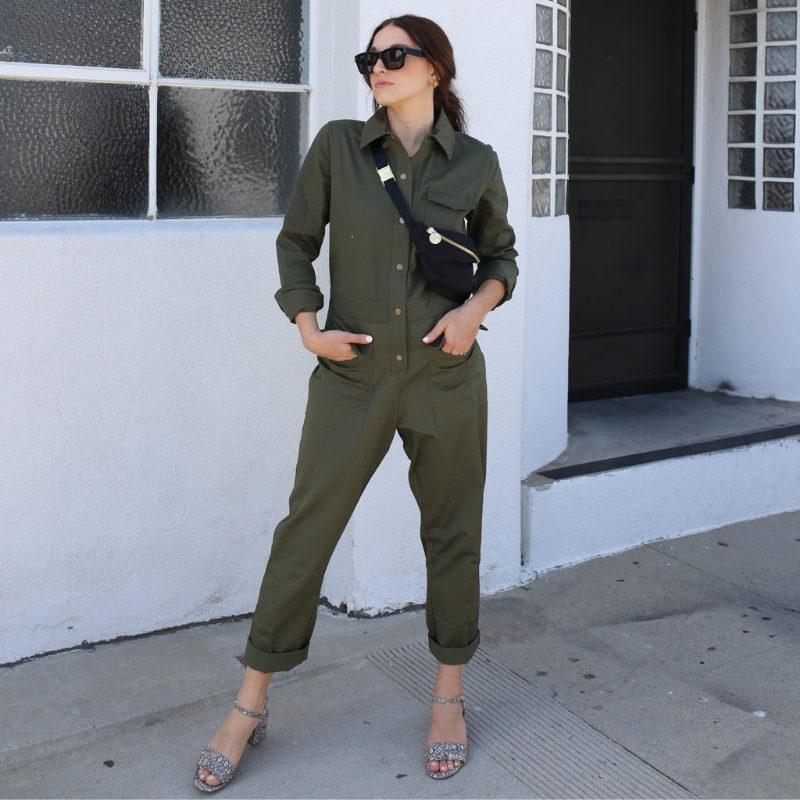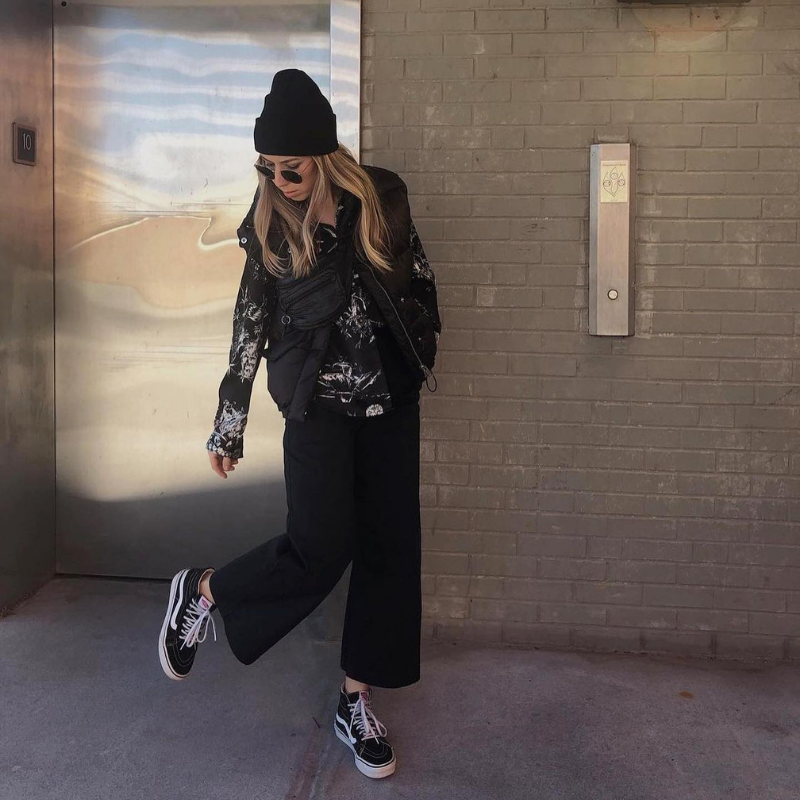For those of us on a budget, fast fashion prices that go as low as $5 a t-shirt are enticing. However, to get prices so cheap, there are sacrifices in material quality, environmental conservation, and labor standards. Ultimately, it’s a disservice to yourself, other people, and the planet.
Luckily, we have a solution for you: a list of the most affordable sustainable brands out there.
While prices for ethically-made clothing will not be as low as fast fashion prices (think about it—treating workers and the environment safely and fairly requires more upkeep than using cheap chemicals and poor wages), there are indeed brands and shopping options that offer clothes on the lower side of the price spectrum.
Here is a list of the best brands for affordable sustainable clothing, plus some tips on securing a sustainable wardrobe without breaking the bank.
Affordable Sustainable Clothing Brands
Ahead are the most affordable, eco-conscious clothing brands vetted for being low-priced (around $25 – $75) but diligent in ethical, diverse, and environmentally friendly practices.

Happy Earth
Average price range: $25 – $75
Happy Earth has a rustic and outdoorsy aesthetic. It’s a go-to brand if you’re looking for comfy clothes for a trail hike or just relaxing on the sofa. Their garments feature graphics of natural landscapes and wildlife.
Happy Earth uses organic cotton, carbon-neutral practices, and water-based inks.

CHNG
Average price range: $30 – $70
CHNG is all about social justice in their brand mission and apparel designs. Their ethical practices include: clothing made in Fair Trade factories, carbon offsetting done per item produced, processes that are GOTS certified, and factories that have achieved platinum LEED.
Priced around $33, their graphic t-shirts advocate themes about world peace, zero waste, feminism, and kindness.

Pact
Average price range: $25 – $45
Pact is a great brand for affordable, eco-friendly activewear and underwear. They produce garments in a Fair Trade Certified Factory, and carbon offset shipping is offered to shoppers online. Plus, their products are made with organic cotton as well as hemp.
They offer leggings made with organic cotton that are only $20-$35 per pair, plus hoodies that won’t usually break the budget at only $70.

For Days
Average price range: $20 – $45
For Days offers minimalist basics with neutral colors, so it is a perfect brand to start transitioning your wardrobe to include sustainable, everyday items. They provide shorts, socks, crop tops, sweats, tanks, tshirts, as well as an upcycled collection, rarely reaching above $50.
There is free, carbon neutral shipping on all orders over $35, and they offer swap credit for old For Days clothes that are sent back. For Days uses GOTS-certified fabrics and recycled materials that satisfy the Global Recycling Standard (100% of their clothing is recyclable). Plus, their dyes are Cradle to Cradle certified.

Known Supply
Average price range: $35 – $70
Known Supply is a B-Corporation whose mission is to make the relationship between customers and the people who make their apparel more transparent. Each product is Fair Trade and has the signature of the individual maker.
Clothing is size inclusive (XS-4XL) and has fun print patterns across a variety of garments, including dresses, overalls, jumpsuits, tops, and bottoms.

Boody
Average price range: $20 – $70
Boody is one of the best places to find affordable, sustainable athleisure, loungewear, and underwear for both men and women.
Made from 100% organic bamboo plants, you can bet these garments will be some of the softest, most breathable pieces you’ll ever wear (read our bamboo guide here!). Their production process involves no pesticides, no fertilizers, and uses low water consumption.

Tentree
Average price range: $35 – $88
Tentree is a one-stop shop for activewear, t-shirts, hoodies, cardigans, dresses, and more. They also offer accessories like hats and bags, and even have a line of kids clothing.
They use natural ingredients like organic cotton, and claim that 10 trees are planted for every item purchased!

Able
Average price range: $20 – $200
Able is one of our sustainable favorites for women empowerment and ending poverty. To help stay transparent, Able publishes their wages and encourages other companies to do the same.
Although some of their products, like jackets and shoes, fall on the pricier side, they do offer jewelry from $18 and t-shirts from $24.

United by Blue
Average price range: $20 – $60
Featuring essentials for men and women, United by Blue is a brand that’s easy on the wallet and the environment! They even have a section for sustainable home decor, which can be hard to find.
Many of their garments are beach-inspired, meaning you will find plenty of swimwear and other beachwear. Perfect for a pre-vacation splurge!

Girlfriend Collective
Average price range: $38 – $78
We love this brand for its inclusivity, sustainability, and quality pieces. To make their clothes, Girlfriend Collective takes what would otherwise be garbage and turns it into functional, beautiful everyday pieces like bras, leggings, tees, and sweatshirts.
Not only do they use recycled materials such as plastic bottles, they also repurpose old Girlfriend Collective clothing and turn them into new pieces to help majorly reduce their waste.
RELATED: Girlfriend Collective Review – Is Their Sustainable Activewear Worth It?

ThredUp
Average price range: Varies
When it comes to affordable, sustainable shopping, online thrift stores like ThredUp are game changers (check out our review here!).
You can find almost anything you’re looking for from everyday t-shirts to designer handbags. The price you pay really depends on what you’re shopping for, but they offer clothing starting at as low as $4!
Plus, while shopping secondhand, you don’t really need to worry about what materials they’re made out of. Buying used items in itself is a sustainable practice, since it doesn’t require any extra production or materials! Keep reading to learn more about shopping for affordable, sustainable clothing.
Shopping Tips for Affordable + Sustainable Clothing
Before purchasing brand new clothes, it is important to consider upcycling and buying secondhand. Regardless of how eco-friendly a product is, reusing items is the best choice for the environment. No harsh chemicals, raw materials, energy, or water are needed to add a second-hand item to your wardrobe.
Shop Thrift Stores
Thrift stores like Goodwill and Salvation Army are great go-to’s that are found in many areas. Although there are usually low-end items in charitable thrift stores, you can discover some high-end finds at cheap prices. Before going, learn all the tips on how to thrift shop.
There are also a ton of online thrift stores that make shopping easy with search tools to find your size, brand, and particular garment type.
Some of the most popular online platforms include ThredUp and Poshmark (you can find out which one is the best fit for your needs here).
Check Consignment Stores
If you’re looking for higher-end clothing, shop consignment stores and vintage stores. Generally, consignment stores have nicer items than thrift stores because they’re more brand-focused and not just donations.
Because they may carry quality brands, it helps to be aware of the brand’s average prices (or just look prices up on your phone) to see if you’re getting a good deal for buying a secondhand item, since stores may mark prices up.
Consider Renting Clothes
We’re seeing more and more clothing rental companies pop up, which is great! This is much more sustainable (and more affordable) than purchasing new garments.
If you love trends and want to frequently wear new clothes from top brands, but also want to be more sustainable, this could be the perfect option for you.
A couple of our favorite clothing rental companies are Rent the Runway and Nuuly, but there are plenty others out there. See our guide below! For renting accessories, we love Rocksbox and Vivrelle.
RELATED: 17 Best Clothing Rental Subscription Services
Transition at Your Own Pace
If you’re really tight on money, begin the sustainable wardrobe transformation with baby steps, such as looking for sustainable basics and underwear since those items are usually less expensive across the board.
Just because you may not be able to afford an entirely sustainable wardrobe doesn’t mean you shouldn’t start somewhere.
Question Your Buying Habits
While shopping, ask yourself these questions:
- Will I really wear this, and more than once?
- Can I upcycle/DIY clothes I already have over buying completely new items?
- What materials is this made of? (Avoid synthetic fibers and look for natural fibers like organic cotton, TENCEL, bamboo, hemp, and linen)
- Is this item low or high maintenance care?
Follow Blogs and Influencers
Read eco-conscious blogs and follow influencers interested in sustainability; a lot of the time they offer discount codes for some of the best sustainable brands and companies.
Engage with Social Media and Emails
Follow sustainable brands’ social media pages or sign up for their emails to make sure you never miss a sale!
Buy Off-Season Items
If it’s spring or summer, check out coats, gloves, hats, scarves, and winter boots that will probably be offered at a lower price (and vice versa for fall/winter). It’s like buying gifts for your future self.
Conclusion
Shopping in an ethical and eco-friendly way does not have to be a luxury. Before shopping for brand new clothing, try buying secondhand and critiquing your impulse to buy new things. When shopping, consider necessity and long-term wear.
While sustainable brands are generally more expensive than fast fashion, you can still find affordable sustainable clothing brands in the lower price range, which ultimately pays off in the long run. Sustainable garments last longer and improve social and environmental conditions for everyone!

